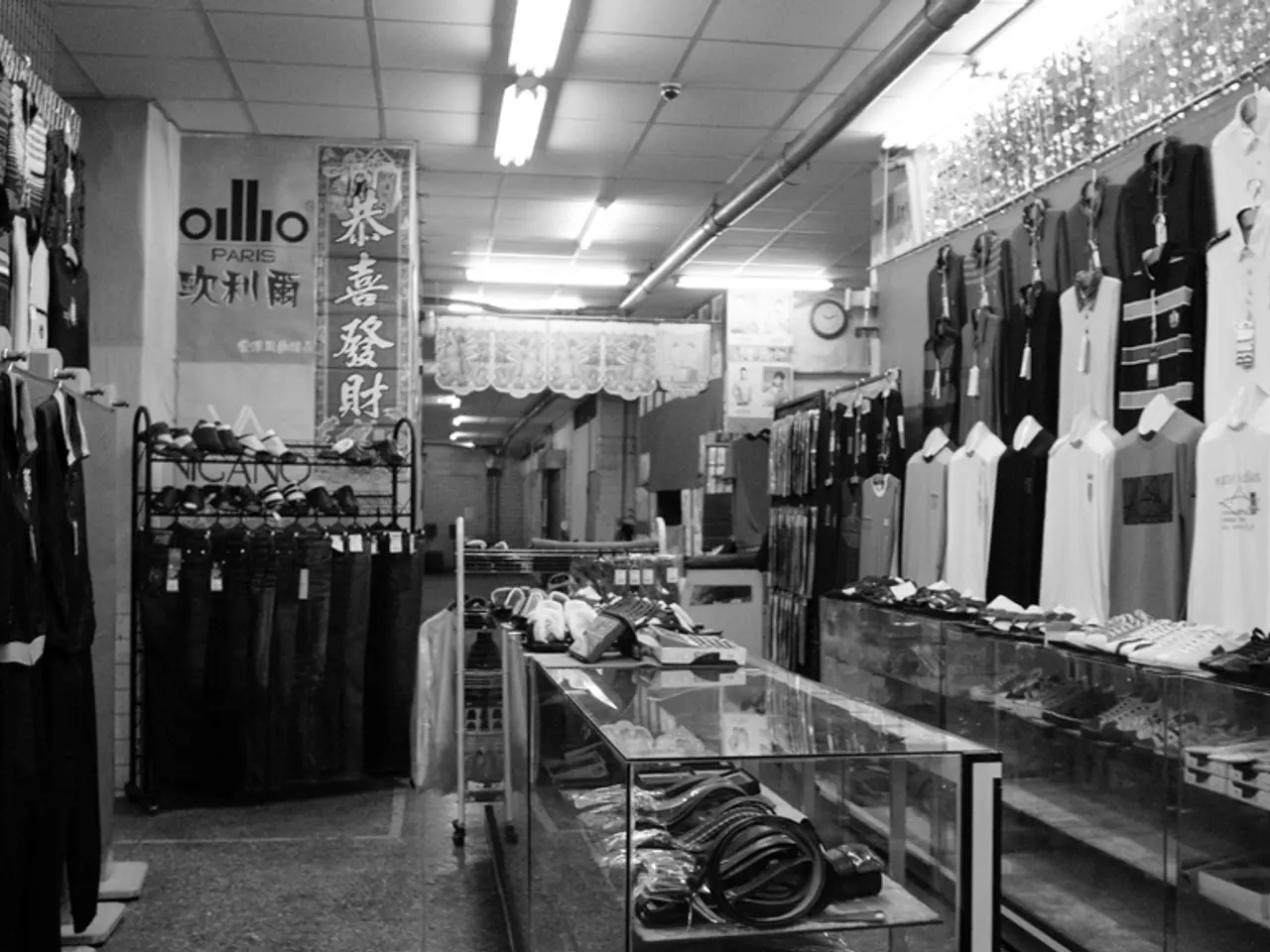Crafting and retailing: A guide to establishing my personal underwear brand
In the ever-evolving world of fashion, many businesspeople are capitalizing on the demand for comfort, sustainability, and design in the underwear industry. This article offers a structured approach to help entrepreneurs find a reliable B2B clothing manufacturer for creating an underwear line, covering research, design, production, and marketing.
1. Research and identify potential manufacturers
To begin, use reputable B2B platforms such as Alibaba, Made-in-China, GlobalSources, or Google to search for manufacturers specializing in underwear or intimate apparel. Attend relevant trade fairs like the Canton Fair to meet manufacturers in person and assess their capabilities directly. Focus on regions known for apparel production, such as Guangdong for large-scale production or Zhejiang for customizable small batches.
2. Evaluate manufacturers rigorously
Once potential manufacturers have been identified, verify their credentials by looking for ISO 9001 (quality management), BSCI (social compliance), or Sedex (ethical trade) certificates. Check production capacity, minimum order quantities (MOQ), and logistics support to align with your business scale and growth plans. Prioritize transparency in business terms, exclusivity options, and brand control (private label or OEM services) to protect your intellectual property and market position.
3. Request and assess samples
Obtain multiple samples from shortlisted suppliers, including different styles and colors, to evaluate material quality, stitching, sizing, and design details. Use samples to benchmark quality and test how the manufacturer addresses feedback and improvements. Evaluate suppliers on key metrics such as on-time, in-full (OTIF) delivery, defect rates, and lead times to anticipate reliable production cycles.
4. Negotiate contracts and production terms
Ensure contracts specify exclusivity rights, intellectual property protections, clear payment terms, and support services like after-sales and logistics assistance. Seek flexibility in MOQs to allow for small test batches and scaling up as your brand grows.
5. Design and marketing collaboration
Choose manufacturers offering design support or those willing to collaborate on product development to ensure your underwear line aligns with market needs. For packaging and branding, consider services like custom packaging providers that handle design, sourcing, and global shipping to create a professional brand experience.
6. Build ongoing relationships
Maintain transparent, responsive communication to foster a stable partnership supportive of long-term growth. Continuously monitor supplier performance through order tracking and periodic quality checks.
By combining thorough supplier vetting, sample testing, clear contracts, and collaboration on design and marketing, you can identify a reliable B2B underwear manufacturer capable of taking your product from concept through production to market with quality and brand integrity.
As you embark on this journey, consider supplementing your sourcing strategy by leveraging platforms like Shopify’s product sourcing guides and industry-specific packaging experts for end-to-end support. Additionally, consider using warehousing services or drop-shipping and fulfillment options offered by B2B suppliers. Collaborate intimately with a producer to plan production and agree on turnaround times, and maintain good inventory management to avoid stockouts and maintain customer satisfaction.
The underwear industry is currently filled with creative private label lines, making it a competitive but promising market for entrepreneurs. With the right approach, you can turn your idea for an underwear line into a market-ready product and join the ranks of successful businesses capitalizing on the demand for comfort, sustainability, and design in this industry.
1. Align your business goals with the manufacturer's
To achieve customer satisfaction, ensure that potential manufacturers share your vision for quality, turnaround time, and sustainability. Consider their commitment to entrepreneurship and how their offerings align with your brand's lifestyle and fashion-and-beauty philosophies.
2. Factor finance and small-business growth into discussions
In negotiations, address financial aspects such as pricing, MOQs, and payment terms that cater to a small-business budget. Seek assurance on the manufacturer's financial stability and their ability to provide flexibility in scaling up or down as your business grows.
3. Maintain long-term partnerships through ongoing improvement
Foster a collaborative relationship with your manufacturer by actively seeking their feedback and implementing improvements. Together, work towards enhancing production processes and building a strong, loyal customer base that drives business growth and brand longevity.
4. Utilize the latest industry resources for continuous improvement
Stay updated on the latest trends in the underwear industry by following fashion-and-beauty influencers on social media, attending conferences, and engaging in networking events. Leverage available resources like Shopify's product sourcing guides, packaging experts, and warehousing services to stay competitive and maintain a high level of quality control.
By implementing these strategies, you can create a solid foundation for your small-business partnerships, ensuring a focus on quality, turnaround time, and customer satisfaction while capitalizing on the growth opportunities available in the underwear industry.




